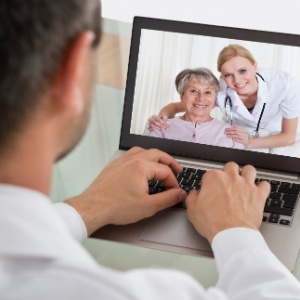Americans love making and reading predictions. Each year as Dec. 31 approaches, the Internet and print publications are full of predictions for the next year. The subject of how and where older adults will live in the United States was the focus of a conference organized by the UC San Diego Center for Healthy Aging in June 2015. This conference was part of the center’s two-year Think Tank series. About 25 physicians, researchers and planning experts helped “develop national recommendations to improve health care, housing, technology and quality of life for the growing number of older adults.”
The results were interesting
Right now, The San Diego Union-Tribune reports, 75 percent of the country’s 43 million people aged 65 and up are living in their own homes, with 90 percent of people surveyed wanting to age in place. And as about 10,000 Baby Boomers turn 65 every day, the need for appropriate support for aging in place is crucial. What’s needed: additional “retrofitted, accessible homes, increased transportation options, home-based healthcare, and technology that will help them [older adults] thrive in their later years.”
One important trend is telemedicine, in which people can be connected to a healthcare professional from home, avoiding the need to travel to an office. Dr. Dilip Jeste, the associate dean for healthy aging and senior care at UCSD and head of the think tank, says that in the near future, homes will include chairs with sensors that deliver information to a doctor, including vital signs — even EKG results. Europe already has senior kiosks with this technology, and Jeste compares the home technology to the next evolution of drugstore blood pressure cuff chairs.
Telemedicine is already on the rise, says News Press Now, which cites the following statistic from GlobalMed: Telehealth can reduce emergency room readmissions by up to 83 percent and lower overall healthcare costs by 30 percent. Telemedicine is not that much different from the days of when doctors made house calls — only now they are using bandwidth rather than cars.
The Internet will make aging in place much easier, experts believe, in more than just health-related ways. As another example, home deliveries are expected to become more common. “Amazon will deliver kitty litter — and don’t underestimate the importance of kitty litter,” says Sandra Rosenbloom, professor of architecture at the University of Texas at Austin, “heavy things, toilet paper. That’s going to make a world of difference.”
2016 Recommendations
Think Tank participants will meet four times before creating a report in fall 2016. This report will make recommendations to Congress as well as to local governmental agencies. Recommendations will also be made to industry leaders, universities, hospitals and the public.
Dr. Dan Blazer, professor of psychiatry and behavioral sciences at Duke University, says the following in another article on the subject by The San Francisco Union-Tribune: “One of the real opportunities is to look at aging as a whole, in contrast to doctors looking at illness, economists looking at Medicare, sociologists on how older people get along in life, engineers looking at housing. This gives us a chance to see the bigger picture and helps us to recognize that older people don’t live in these silos.”
What are your predictions for the future of aging in place? Let us know in the comments below.













